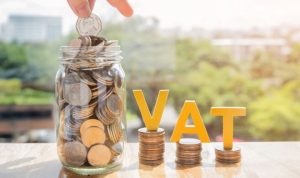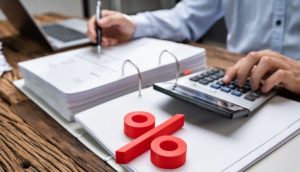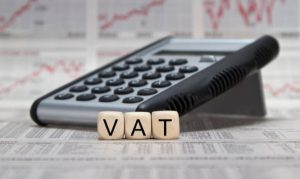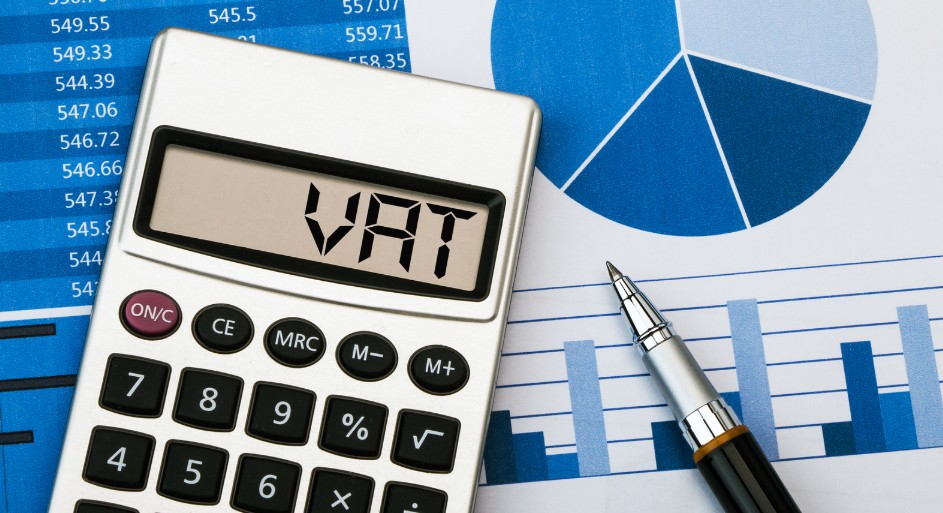Table of Contents
ToggleNavigating VAT registration can often seem overwhelming, especially for businesses and individuals new to taxation procedures. Ensuring a company is VAT-registered is crucial for compliance, avoiding fraud, and reclaiming VAT on eligible purchases.
In this article, we provide a step-by-step guide on how to check if a company is registered for VAT.
From using online tools like HMRC’s VAT checker to verifying VAT numbers through the VAT Information Exchange System (VIES), we cover everything you need to know.
By the end of this article, you’ll have a clear understanding of the process and its significance.
What Is VAT?

Value Added Tax (VAT) is a consumption tax applied to goods and services at various stages of production and distribution. Businesses collect VAT from customers on behalf of HM Revenue and Customs (HMRC) and remit it to the government.
The VAT rates in the UK include the standard rate of 20%, a reduced rate of 5%, and a zero rate for certain items like basic food and children’s clothing. To quickly work out how VAT might affect your business pricing or reclaimable costs, try our VAT Calculator.
Key reasons why VAT is important for businesses include:
- Legal Compliance: Businesses earning above the VAT registration threshold (currently £85,000 in taxable turnover) must register for VAT or face penalties.
- Cost Efficiency: VAT-registered businesses can reclaim VAT paid on eligible expenses, reducing overall tax liability.
- Credibility and Trust: Being VAT registered boosts the legitimacy of businesses, especially for clients who prefer dealing with registered entities.
- Impact on Pricing: Companies need to strategically incorporate VAT into their pricing, balancing customer affordability and profitability.
Overall, VAT plays a pivotal role in financial management, business growth, and tax compliance within the UK’s economy.
How to Check if a Company is Registered for VAT?
Verifying a company’s VAT registration is essential for ensuring compliance and maintaining accurate financial records. Several methods can be employed to confirm a company’s VAT status:
- HMRC’s Online VAT Checker: The UK’s HM Revenue and Customs (HMRC) provides an online service to verify VAT numbers. By entering the VAT number, you can confirm its validity and associated business details.
- VAT Information Exchange System (VIES): For businesses operating within the EU, the European Commission offers the VIES platform. This system allows users to validate VAT numbers across member states, ensuring the legitimacy of cross-border transactions.
- Contacting HMRC Directly: If online methods are inconclusive, reaching out to HMRC’s VAT helpline can provide confirmation. This approach is particularly useful for complex cases or when additional clarification is needed.
- Reviewing Official Documentation: Legitimate businesses typically display their VAT numbers on invoices, receipts, and official correspondence. Examining these documents can offer immediate verification.
- Company Websites and Public Records: Many businesses publish their VAT numbers on their websites, often in the footer or legal information sections. Additionally, public business directories may list VAT registration details.
It’s crucial to ensure that the VAT number format aligns with the standard UK structure, which typically includes the ‘GB’ prefix followed by nine digits. Discrepancies in format can indicate potential issues.
Regular verification of VAT numbers is vital to prevent fraud and ensure compliance with tax regulations. Maintaining accurate records of these checks can also be beneficial for auditing purposes.
What Are the Key Indicators That a Business Might Be VAT Registered?

Identifying whether a business is VAT registered can be determined through several indicators:
- VAT Number on Invoices: Legitimate VAT-registered businesses include their VAT registration number on invoices and receipts. This number is essential for clients who wish to reclaim VAT.
- VAT-inclusive Pricing: Businesses often indicate whether prices are inclusive or exclusive of VAT. Clear mention of VAT charges suggests registration.
- Website Disclosures: Many companies display their VAT numbers on their websites, typically in the footer or legal information sections. This transparency is a good indicator of VAT registration.
- Official Documentation: VAT-registered businesses are required to provide VAT invoices upon request. The presence of a VAT number on such documents is a clear indicator.
- Business Size and Turnover: Companies with a turnover exceeding the VAT threshold (£85,000 as of 2024) are mandated to register for VAT. Large-scale operations often imply VAT registration.
While these indicators can suggest VAT registration, it’s advisable to verify a company’s VAT status through official channels to ensure accuracy.
Why Should You Verify a Company’s VAT Status?
Verifying a company’s VAT status is crucial for several reasons:
- Legal Compliance: Engaging with VAT-registered businesses ensures adherence to tax laws, preventing potential legal complications.
- Financial Accuracy: Accurate VAT information allows businesses to reclaim VAT on eligible purchases, optimizing financial management.
- Fraud Prevention: Verifying VAT numbers helps detect fraudulent activities, protecting your business from scams and financial losses.
- Business Credibility: Dealing with verified VAT-registered companies enhances trust and professionalism in business relationships.
Regular verification of VAT status is a best practice that safeguards your business’s financial health and reputation.
How Can You Use HMRC’s VAT Checker to Validate Registration?
HMRC offers an online VAT Checker tool that allows businesses and individuals to verify the validity of a UK VAT number. To use this service:
- Access the Tool: Visit the official HMRC website and navigate to the VAT number validation service.
- Enter the VAT Number: Input the VAT number you wish to verify. Ensure the number follows the UK format, typically starting with ‘GB’ followed by nine digits.
- Review the Results: The system will confirm whether the VAT number is valid and may provide associated business information.
This tool is essential for businesses to ensure they are dealing with legitimate VAT-registered entities, thereby maintaining compliance and preventing fraud.
What Is the Role of the VAT Information Exchange System (VIES)?

The VAT Information Exchange System (VIES) is a valuable tool for businesses engaged in cross-border trade within the European Union (EU).
Managed by the European Commission, it enables users to verify the VAT registration status of companies in EU member states. This system is especially useful for ensuring compliance with EU VAT laws and preventing fraud in international transactions.
Key Features of VIES:
- Cross-Border Validation: Businesses can confirm if their trading partners in the EU are VAT registered.
- Real-Time Checks: VIES provides instant results on the validity of VAT numbers entered into the system.
- Supports Invoicing: A valid VAT number ensures businesses can apply the correct VAT treatment, such as zero-rating goods for export.
Steps to Use VIES:
- Visit the VIES platform on the European Commission’s website.
- Enter the VAT number of the company you want to verify.
- Select the corresponding EU member state.
- Review the validation status provided by the system.
Using VIES helps businesses avoid potential fines and penalties associated with incorrect VAT reporting. It also streamlines the reclaim process for VAT paid during cross-border transactions, ensuring smooth financial operations.
What Happens If a Company Fails to Register for VAT?
Failure to register for VAT when required can lead to significant consequences for businesses. UK law mandates that companies with a taxable turnover exceeding the VAT threshold (currently £85,000) must register for VAT. Non-compliance can result in severe financial and legal repercussions.
Consequences of Non-Registration:
- Fines and Penalties: HMRC imposes financial penalties for failing to register on time. These fines can be calculated as a percentage of the VAT owed, increasing with the delay.
- Interest Charges: Businesses may incur interest on the unpaid VAT from the time they should have registered.
- Restricted Tax Reclaims: Non-registered companies cannot reclaim VAT on purchases, increasing operational costs.
- Potential Legal Action: HMRC may take enforcement actions, including audits or legal proceedings, for deliberate non-compliance.
For instance, if a company surpasses the VAT threshold but delays registration for six months, it might face both backdated VAT payments and additional fines. Early registration and compliance help businesses avoid these issues and maintain a good standing with HMRC.
How Can You Identify a Fake or Incorrect VAT Registration Number?

Detecting fake or incorrect VAT registration numbers is crucial to avoid fraud and ensure compliance. Fraudulent VAT numbers can lead to financial losses and regulatory complications for businesses.
Steps to Identify Fake VAT Numbers:
- Validate the Number with HMRC or VIES: Use the official HMRC VAT checker or VIES system to confirm the legitimacy of the VAT number.
- Check the Format: UK VAT numbers typically start with “GB” followed by nine digits. Deviations from this format can indicate falsification.
- Match with Company Details: Ensure the VAT number corresponds to the company’s registered name and address.
- Look for Red Flags: Suspicious behaviour, such as reluctance to provide a VAT number or inconsistent information on invoices, can signal fraud.
Example of Format Validation:
| Country | Prefix | Digits |
| UK | GB | 9 |
| France | FR | 11 |
| Germany | DE | 9 |
By following these steps, businesses can safeguard themselves from fraudulent activities and ensure compliance with VAT regulations.
What Information Do You Need to Check a VAT Registration?
To verify a VAT registration, specific information is required. Providing accurate details ensures a smooth and efficient validation process.
Essential Information Needed:
- VAT Registration Number: The unique identifier issued to VAT-registered businesses.
- Business Name: The registered name of the company to cross-reference with the VAT number.
- Address: The company’s registered address can be used to confirm its authenticity.
Additional Tips:
- When validating via VIES, select the correct member state corresponding to the VAT number.
- Keep records of verification for future reference, particularly during audits or tax reviews.
Having this information readily available simplifies the validation process and minimizes errors, ensuring that businesses maintain compliance.
Can You Check if a Company Was Previously VAT Registered?

Yes, it is possible to check if a company was previously VAT registered. This information is useful for reviewing historical transactions or verifying older invoices. However, accessing historical VAT data may require direct contact with HMRC.
Steps to Check Past VAT Registration:
- Contact HMRC: Submit a request to HMRC for historical VAT registration details.
- Review Business Records: Older invoices and official documents may include the VAT registration number.
- Engage Professional Services: Accountants or tax advisors can assist in retrieving historical VAT information.
Knowing whether a company was VAT registered during a specific period ensures accurate tax reporting and audit compliance. It also helps identify discrepancies in past transactions.
Conclusion
Verifying a company’s VAT registration is a simple yet vital process for maintaining compliance and safeguarding your business against fraud.
Whether you’re working with domestic or international businesses, tools like HMRC’s VAT checker and VIES simplify this task.
By following the steps outlined in this article, you can confidently ensure that your business transactions remain legitimate and transparent. Staying proactive in VAT verification will not only save you potential legal troubles but also boost your business’s credibility in the market.
FAQs
How do I find a company’s VAT number in the UK?
You can locate a VAT number on a company’s invoices, official documents, or website. Alternatively, you can use HMRC’s VAT checker for verification.
Can I check a VAT number without contacting HMRC?
Yes, you can use online tools like HMRC’s VAT checker or the VAT Information Exchange System (VIES) for EU businesses.
What should I do if a VAT number is invalid?
Double-check the format and details provided. If it remains invalid, contact HMRC for clarification and avoid proceeding with transactions.
Can I verify a company’s VAT registration outside the UK?
Yes, the VIES platform enables cross-border VAT validation for businesses in EU member states.
Is VAT registration mandatory for all businesses?
No, VAT registration is required only if a company’s taxable turnover exceeds the VAT threshold (£85,000 in the UK as of 2024).
Can sole traders be VAT registered?
Yes, sole traders can register for VAT if their taxable turnover surpasses the VAT threshold or if they choose to register voluntarily.
How often should I verify a supplier’s VAT number?
It is advisable to verify VAT numbers periodically, especially for new suppliers or if there are inconsistencies in their documentation.




